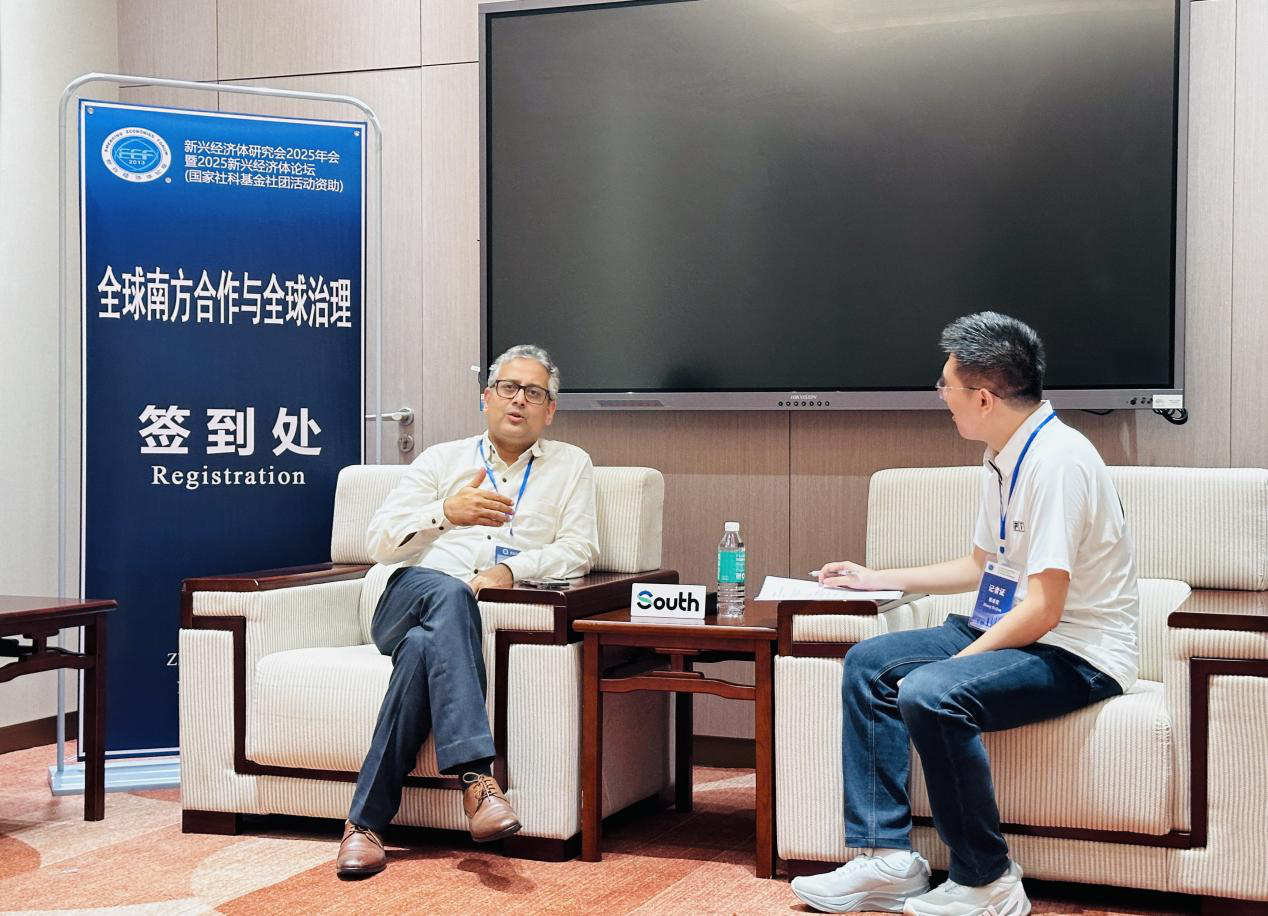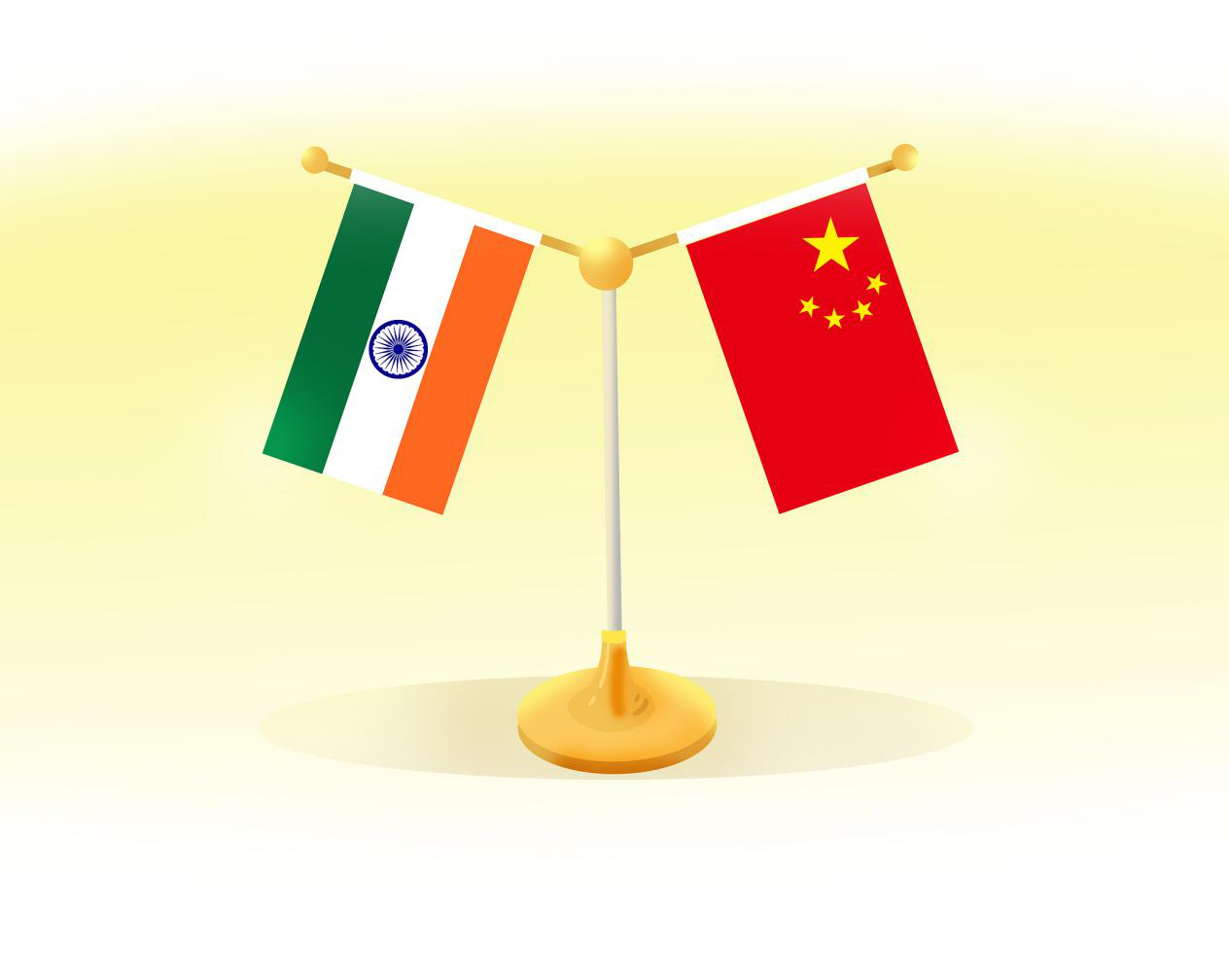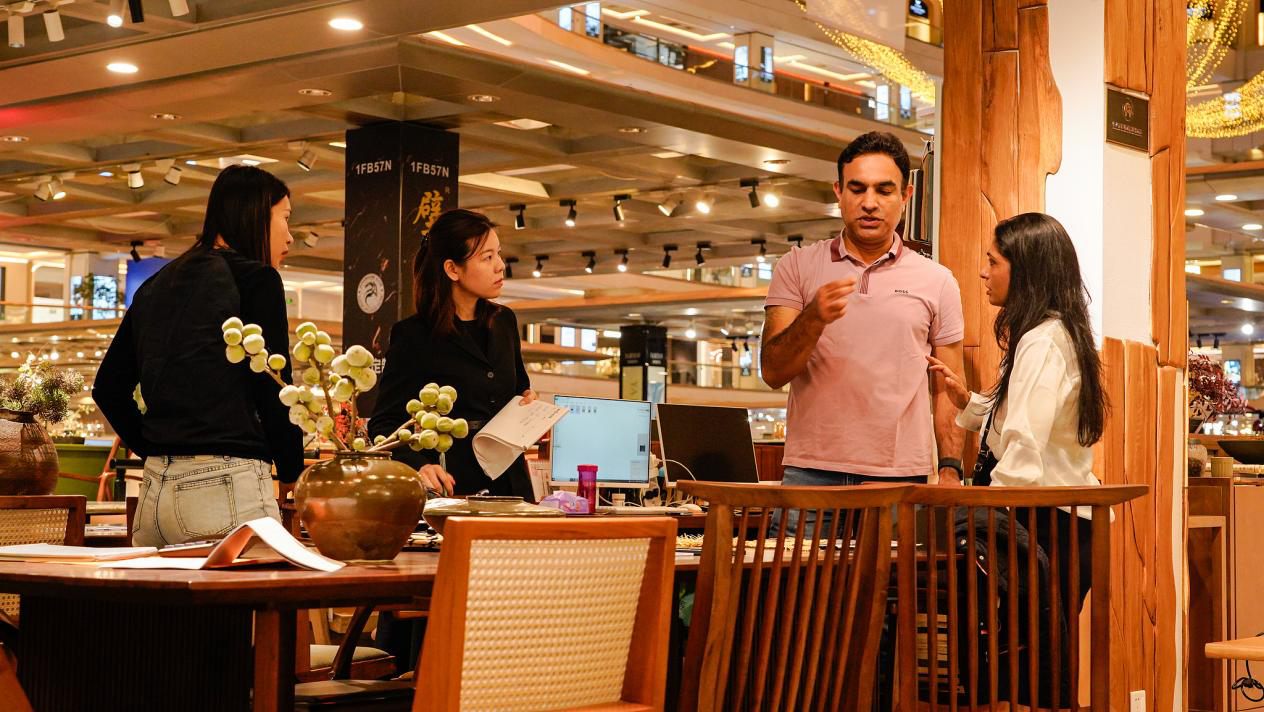
Rajiv Ranjan receives the exclusive interview with South on Nov. 8, 2025, in Zhaoqing. (Photo: Zhaoqing University)
On November 9, China resumed direct flights from Shanghai to Delhi, marking the official resumption of the China-India route after a five-year hiatus.
Correspondingly, India launched daily flights from Kolkata to Guangzhou in late October and daily flights from Delhi to Guangzhou starting from November 10.
In a recent exclusive interview with South, Rajiv Ranjan, Associate Professor in the Department of East Asian Studies at the University of Delhi, noted that within the Global South, both India and China should collaborate to strengthen this emerging community. He was attending a roundtable discussion focused on Global South Cooperation and Global Governance in Zhaoqing, Guangdong Province.
He also expressed that the two countries need to increase people-to-people exchanges to reset their bilateral relations.

Heads of state from BRICS nations attend a meeting at the Museum of Modern Art during the BRICS Summit in Rio de Janeiro, Brazil, on July 06, 2025. (Photo: CFP)
A structural shift in the narrative of the Global South
"We see a structural shift in the narrative of the Global South," Ranjan emphasized.
"Many in the West were dismissive of the idea of the Global South as too diverse an identity with fragmented interests. However, now this consolidating identity and converging interests in the Global South are creating new avenues for collaboration among countries," Ranjan added.
In addition, the countries of the Global South are also asserting their demand for better representation in global governance while defending their geopolitical and geo-economic interests, Ranjan assessed.

National flags of India and China (Photo: CFP)
More collaboration, fewer contests between India and China
India and China have been in contest in recent years, as Ranjan observed. "This is due to both bilateral tensions and the international structure. But who will suffer? The Global South." He attributed this collaboration-contest dynamic to the fluctuating relations of the two countries.
But as Ranjan further explained, BRICS countries have now emerged as "an enormously powerful economic bloc, which means their identities have transformed. India and China have changed their identity from aid recipients to also donor countries, thereby assisting countries of the Global South in their development," he added.
How India and China can promote global solidarity towards the Global South is a pressing question. The answer, according to Ranjan, is more collaboration.
He listed several sectors where India and China can collaborate. One of them is helping some Global South countries develop, as they still lack infrastructure, development finance, and energy.
"Both India and China could collaborate, for example, in green energy and development finance for the group," Ranjan noted.
Another example would be climate change. Given the large populations of both countries and their ensuing greenhouse gas emissions, India and China both need to cooperate on climate change and related clean energy initiatives.
"These countries from the Global South depend on us. We cannot escape our own responsibilities," he added.

Indian tourists selected furniture at the Louvre Furniture Mall in Foshan, Guangdong on Oct. 22, 2025. (Photo: CFP)
India and China need to increase people-to-people exchanges
Given Indian Prime Minister Narendra Modi's visit to China in September this year, Ranjan noted that the two sides can continue this momentum and need to increase people-to-people exchanges.
He asked whether both Indian and Chinese people truly know each other. First, both countries must invest in getting to know one another.
He told the South reporter that many Chinese grandparents vividly recall the Bollywood movie "AWARA," released in the 1950s, and its theme songs are still played in "Square Dance" in China.
Fast forward to the 2000s, "Dangal," featuring Indian movie star Aamir Khan, again touched the hearts and minds of Chinese youths.
As it appears that "we have lost generations from the 1960s to the 2000s," he lamented. The IT revolution changed the way information travels, making us literally just a mobile phone away.
Nonetheless, this has also created new problems with AI-generated images and news that distort our imaginations and perceptions about each other, further deepening mistrust between the two countries.
In this regard, Ranjan proposed that Indians and Chinese should visit each other, and scholars from both countries should frequently visit and collaborate on research.
"Instead of contesting, both countries should cooperate. But to do that, we must address the challenges in our relationship. This is a new beginning that we have started. We should not stop this beginning," Ranjan added.
Reporter: Zhang Ruijun
Editor: Yuan Zixiang, James Campion, Shen He, Ouyang Yan
















